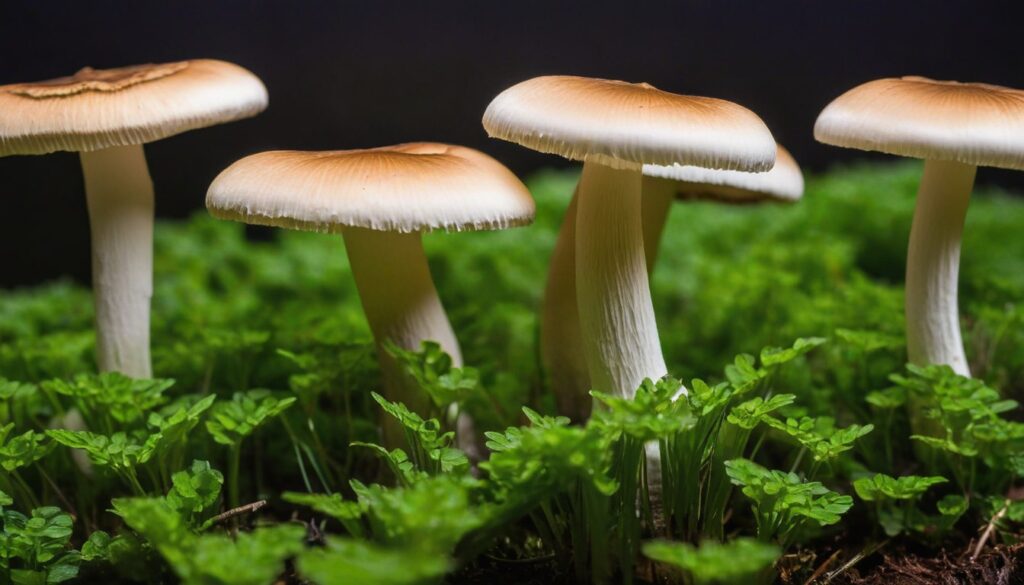Have you ever wondered if it’s possible to clone mushrooms at home? The answer is yes, and it’s easier than you might think. Cloning mushrooms allows you to reproduce your favorite strains and grow your own fungi with minimal effort.
In this guide, we will walk you through the cloning process step-by-step, providing you with all the information you need to successfully cultivate your own mushrooms from start to finish. Whether you’re a seasoned mycophile or a beginner, this guide is for you.
Key Takeaways:
- Cloning mushrooms is an accessible and rewarding process that anyone can do at home.
- By cloning your own mushrooms, you can reproduce your favorite fungal strains for personal use.
- Following proper sterile techniques is essential for successful mushroom cloning.
- Preparing a nutrient-rich cloning medium is crucial for the growth of mushroom tissue.
- Proper incubation and care are necessary for the cloned mycelium to grow into healthy mushrooms.
Understanding Mushroom Cloning
Cloning mushrooms at home is an exciting and rewarding process. But before you begin, it’s important to understand the science behind it.
The process of mushroom cloning involves replicating a healthy mushroom specimen by transferring its tissue or spores onto a nutrient-rich medium. The replicated mycelium is then used to grow new mushrooms.
The Different Methods of Cloning
There are several methods of mushroom cloning. The most common method is tissue cloning, which involves collecting a small piece of mushroom tissue and transferring it to a sterile growing medium. Spore cloning, on the other hand, involves collecting spores and using them to create new mycelium.
The Role of Mycelium
Mycelium is the vegetative part of the mushroom that grows underground. It’s made up of a network of thread-like structures called hyphae. When the mycelium is healthy, it’s able to produce mushrooms. Cloning allows for the preservation and replication of healthy mycelium.
The Significance of Spores
Spores are the microscopic reproductive cells of mushrooms. They’re produced by the gills on the underside of the mushroom cap. Spores are an important part of the cloning process, as they can be used to create new mycelium. However, spore cloning can be less reliable than tissue cloning, as it’s more difficult to ensure the genetic consistency of the new mycelium.
Identifying Suitable Mushroom Strains for Cloning
When it comes to cloning mushrooms, not all strains are created equal. To ensure a successful cloning process, it’s essential to choose healthy and vigorous mushroom specimens. But how do you identify the right strains for cloning?
Begin by considering which mushroom strains you prefer and are interested in growing. Keep in mind that some strains may be more difficult to clone than others. For beginners, it’s best to start with more straightforward varieties that are known to be suitable for cloning.
You should also look for strains that are known to have a high success rate for cloning. Research online or consult with experienced mushroom growers to learn which strains are most accessible for home cloning. Additionally, look for strains that are healthy and free from visible molds or other signs of disease.
One way to ensure the vitality of your mushroom strain is by purchasing high-quality spores or spawn. By doing so, you’ll be able to select healthy and vigorous specimens to clone and grow. Additionally, you can maintain a culture bank of your favorite strains for future cloning endeavors.
Creating a Sterile Environment for Cloning
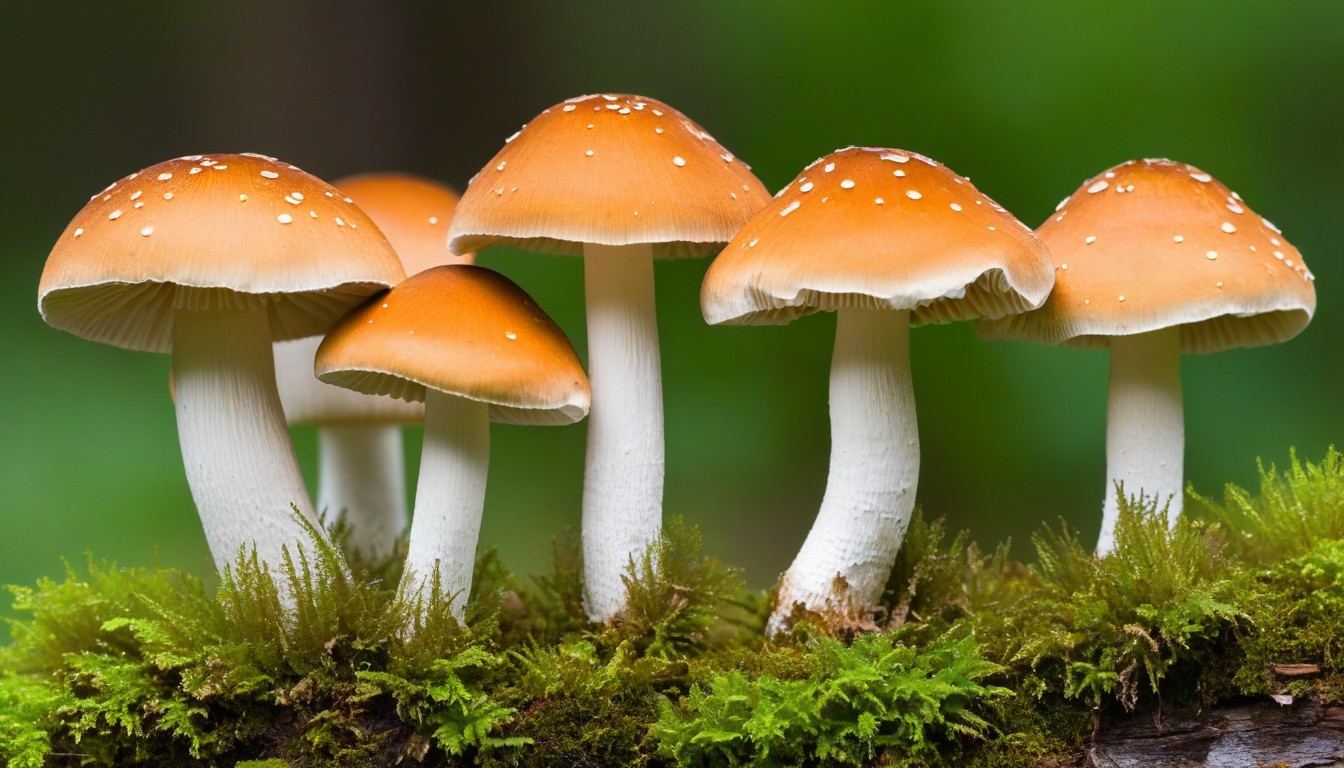
When it comes to cloning mushrooms, creating a sterile environment is crucial to ensure successful growth and avoid contamination. Fungal spores and bacteria can easily spread and compromise your entire cloning process unless you take the necessary precautions to create a clean and sterile workspace.
Cleanliness First
Before you begin, it’s essential to clean your workspace thoroughly. Make sure to wipe down all surfaces with a disinfectant, including countertops, tools, and containers. Make sure to wear clean clothes and sterilize your hands before handling any equipment or substrate.
Sanitize Your Equipment
Any equipment or tools that will come into contact with your clones or substrate should be thoroughly sanitized. This includes any petri dishes, tools, and syringes that will be used for tissue collection, transfer, or inoculation. Use an autoclave or pressure cooker to sterilize your equipment properly.
Create a Still Air Environment
A Still Air Environment or SAE is a necessary step to prevent contamination when working with cultures. This involves creating a sealed environment where still air reduces the movement of bacteria, fungal spores, or other airborne contaminants. You can use a still air box or a HEPA flow hood to achieve this.
Practice Good Hygiene and Sanitation
Throughout the cloning process, it is essential to practice good hygiene and sanitation. Make sure to avoid touching your face, hair, or clothing while working with clones. Never eat, drink, or smoke near your workspace. Keep the area tidy and avoid clutter. When you are not working in the sterile environment, keep the area covered to prevent contamination.
By following these steps, you can create a clean and sterile environment for successful mushroom cloning. With proper cleanliness and sanitation, you can cultivate healthy clones free of contamination and grow your favorite fungal varieties in the comfort of your home.
Collecting Mushroom Tissue for Cloning
Once you have set up a sterile environment, the next step in the cloning process is collecting tissue samples from your chosen mushroom strain. To ensure the viability of the tissue, you need to use proper techniques and tools.
To start, you’ll need to sterilize a pair of sharp scissors or a scalpel by dipping it in rubbing alcohol. Then, select a healthy and vigorous mushroom specimen for tissue collection, as diseased or weak specimens may result in poor quality clones.
Using the sterilized scissors or scalpel, cut off a small piece of the mushroom’s cap or stem, making sure to avoid contaminating the sample. You can also scrape tissue off the gills using a sterile scraper. Choose tissue that is firm and meaty, without any signs of decay.
It’s essential to work quickly and skillfully because prolonged exposure to the open air can damage the mushroom tissue and reduce its viability. After collecting the tissue, place it in a sterile petri dish or test tube and seal it with parafilm to prevent contamination.
With careful tissue collection and proper handling, you can set the stage for successful cloning and grow your own healthy and vibrant mushrooms at home.
Preparing the Cloning Medium
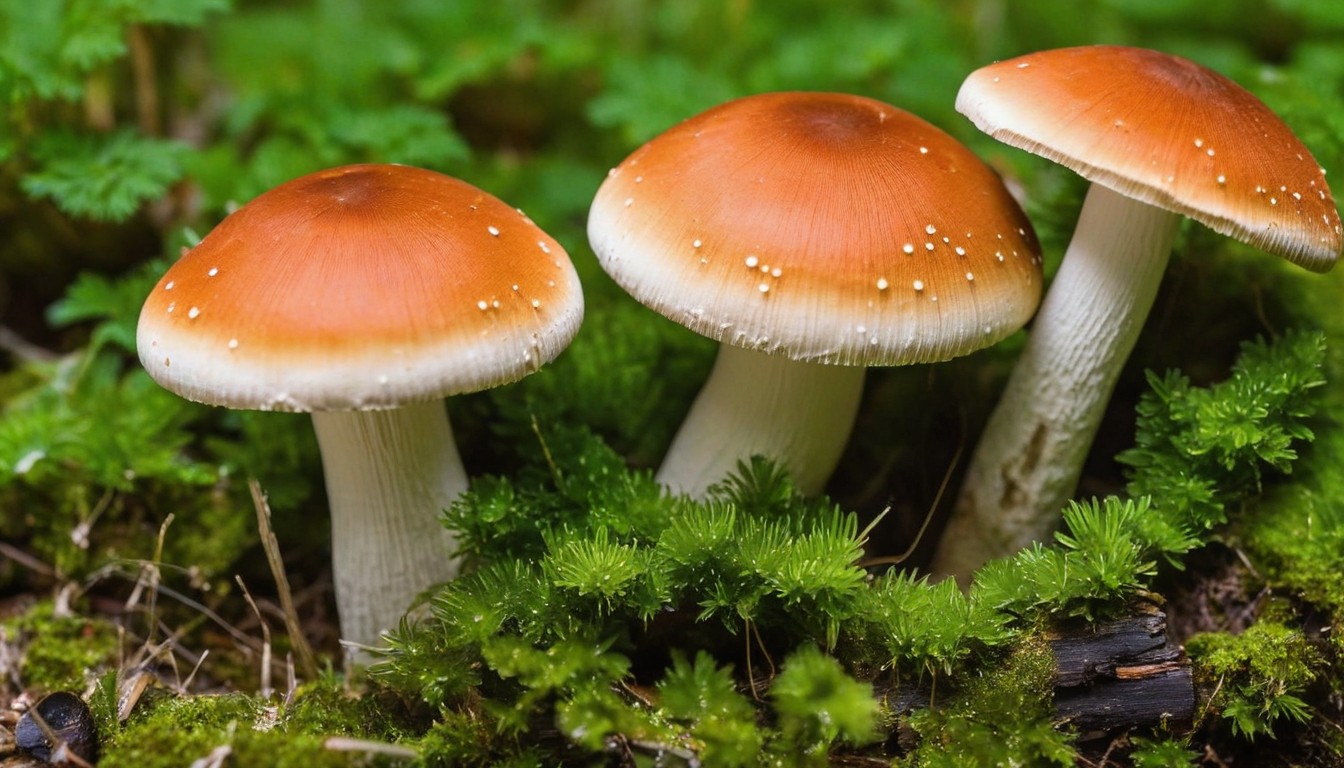
One critical aspect of cloning mushrooms is creating the perfect cloning medium. Agar-based mediums are commonly used as they provide the necessary nutrients for mushroom tissues to grow. Here’s how to prepare your cloning medium:
- Begin by sterilizing your equipment. This ensures a contamination-free environment that promotes optimal growth.
- Add the necessary nutrient-rich ingredients to your agar, such as peptone or yeast extract, to provide the ideal environment for your mushroom tissue.
- Mix well, and then heat until the agar dissolves completely in the mixture.
- Pour your cloning medium into sterile petri dishes, ready to receive your tissue samples.
Ensuring your cloning medium is rich in necessary nutrients is crucial to the success of your cloning process. By following these instructions, you will create an ideal medium for the growth of your mushroom tissue.
Transferring Mushroom Tissue to the Cloning Medium
Now that you have prepared the cloning medium, it’s time to transfer the mushroom tissue onto it. The success of this step depends on maintaining a sterile technique throughout the process. Any contamination could lead to the growth of unwanted organisms instead of the cloned mycelium.
To ensure sterile conditions, wear gloves, and sterilize all your equipment, including the scalpel, forceps, and petri dishes. It’s essential also to work in a laminar flow hood or a still-air box, which minimizes the risk of contamination.
Begin by slicing a small piece of tissue from the selected mushroom specimen using a sterilized scalpel. Take care to avoid touching the tissue, which can damage or contaminate it. Use sterilized forceps to transfer the tissue into the prepared cloning medium. Place the tissue on the surface of the medium, ensuring it adheres to the agar. Repeat the process with additional pieces of tissue, spaced apart, to ensure each sample can grow independently of each other.
After placing the tissue on the medium, seal the petri dish with parafilm or sterile plastic wrap to prevent airborne contaminants from entering the growing environment. Incubate the petri dish in a warm and dark place for several days, checking regularly for signs of mycelial growth.
|
Steps | |
|---|---|
|
Step 1: |
Slice a piece of tissue from the mushroom specimen using a sterilized scalpel. |
|
Step 2: |
Transfer the tissue to the prepared cloning medium using sterilized forceps. |
|
Step 3: |
Place the tissue on the surface of the medium and seal the petri dish. |
|
Step 4: |
Incubate the petri dish and monitor for mycelial growth. |
Incubating and Caring for the Cloned Mushroom Tissue
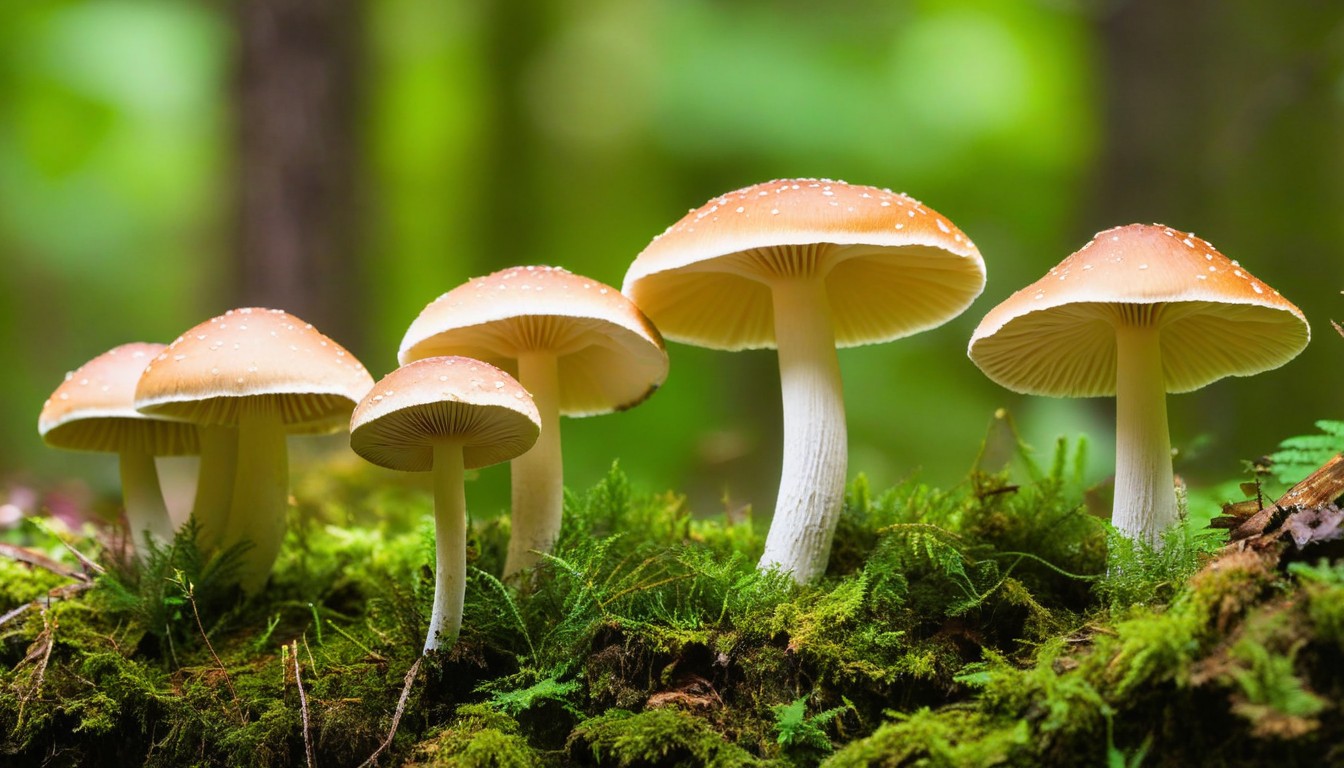
Once you have successfully transferred your mushroom tissue to the cloning medium, it’s time to focus on incubating and caring for your clones. To ensure optimal conditions for growth, follow these necessary steps:
- Place the cloning containers in a warm, dark place to encourage growth. The ideal temperature range is between 75-80°F.
- Monitor the clones closely for contamination and discard any contaminated samples immediately to prevent the spread of harmful bacteria or fungi.
- Check the moisture levels regularly by misting the containers with sterilized water. The cloning medium should be moist, but not soaking wet.
- Provide proper ventilation to prevent excess humidity from building up and potentially damaging the clones.
Caring for your clones is crucial in successful mushroom cultivation. Utilize these optimal conditions to ensure your cloned mushroom tissue grows into healthy, vigorous mycelium that is ready for transfer.
Transferring the Cloned Mycelium to Growing Substrate
Once the cloned mycelium has fully colonized the cloning medium, it is ready to be transferred to the growing substrate. The growing substrate is a nutrient-rich material that provides the mycelium with the necessary food to grow into healthy mushrooms.
Choosing the right growing substrate
The choice of growing substrate depends on the type of mushroom being grown. Common growing substrates include straw, sawdust, and composted manure.
It’s important to select a substrate that is clean and free from contaminants to ensure optimal mushroom growth. Sterilize the substrate before use by boiling or steaming it, and allow it to cool to room temperature before use.
Transferring the mycelium to the substrate
To transfer the mycelium to the growing substrate, create a small hole in the center of the substrate and place a small piece of colonized cloning medium into it. Gently press the medium into the substrate to ensure it is in contact with the growing material.
Cover the hole with a small layer of extra substrate to protect the clone from the outside environment and retain moisture. Incubate the substrate in a warm and humid environment, as this will promote the growth of mycelium throughout the substrate.
Optimizing the growth of the mycelium
As the mycelium grows, it forms a network throughout the substrate, absorbing nutrients and breaking down the material. During this stage, the mycelium requires frequent misting to maintain high humidity and regular airing out to prevent the buildup of carbon dioxide.
Once the growing substrate has fully colonized, the mycelium is ready to begin producing mushrooms. This is when you can begin to harvest and enjoy the fruits of your labor!
Harvesting and Enjoying Your Homegrown Mushrooms
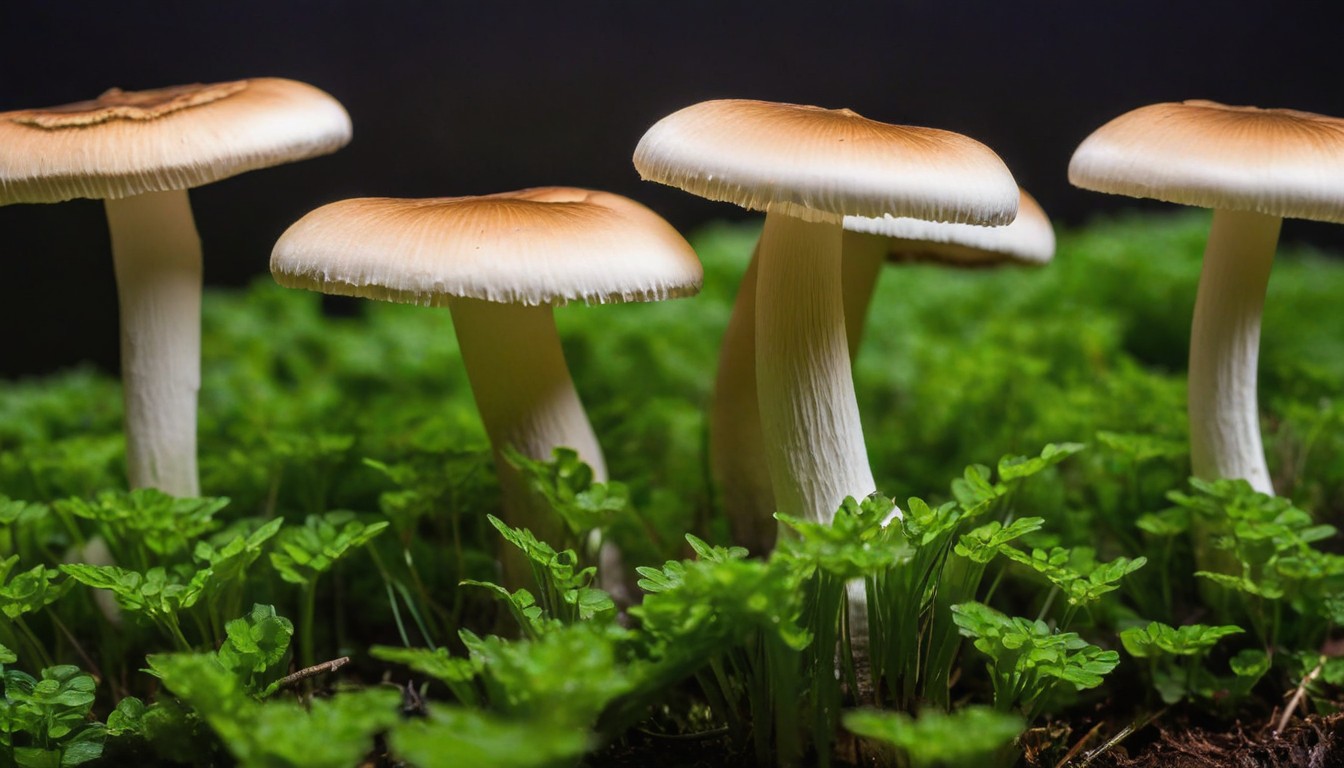
After patiently waiting for your homegrown mushrooms to grow, it’s time to harvest them! The best way to harvest mushrooms is to twist and pull them from the growing substrate gently. Always make sure not to damage any nearby buds or other harvested mushrooms. Storing your mushrooms correctly will help maintain their freshness and flavor longer. Place them in a paper bag in the refrigerator, and they will stay fresh for up to a week.
When it comes to enjoying your homegrown mushrooms, there are endless culinary delights to explore! Sauté them in some butter and garlic for a savory side dish, add to soups, stews or chili for a rich umami flavor, or use them as a meat substitute in your favorite recipes. The possibilities are endless!
Homegrown mushrooms are packed with flavor and aroma and can revolutionize your kitchen pantry. The taste of fresh, homegrown mushrooms is so pure and natural, it is impossible to describe it in words!” – Jill Smith, Mushroom Enthusiast
No matter how you choose to prepare them, there’s no denying that homegrown mushrooms add a delightful and distinctive touch to any meal. Harvesting and cooking with your own mushrooms is a rewarding experience that is sure to impress your friends and family. Happy harvesting and bon appetit!
In Conclusion
In conclusion, cloning mushrooms is a fun and rewarding activity that anyone can do at home. With the right knowledge and tools, you can enjoy the satisfaction of growing your own fungi and enjoying delicious, homegrown mushrooms.
We hope this guide has provided you with the information you need to get started with mushroom cloning. Remember to always select healthy and vigorous strains, create a sterile environment, and follow the proper procedures for tissue collection and transfer.
As you embark on your journey of mushroom cloning, don’t be afraid to experiment and try different varieties. Who knows, you might discover a new favorite!
Thank you for taking the time to read our guide. We wish you the best of luck in your mushroom cloning endeavors. Happy growing!
FAQ
What is mushroom cloning?
Mushroom cloning is the process of creating new mushroom cultures from tissue samples taken from existing mushrooms. It allows you to replicate the desired characteristics of a specific mushroom strain.
Why should I clone mushrooms instead of using spores?
Cloning mushrooms ensures that you are reproducing the exact genetic makeup of a specific mushroom strain. This allows for consistent results in terms of flavor, appearance, and growth characteristics.
How do I identify suitable mushroom strains for cloning?
To identify suitable mushroom strains for cloning, choose specimens that are healthy, robust, and free from signs of disease or contamination. Look for mushrooms that have desirable characteristics such as taste, appearance, and growth rate.
How do I create a sterile environment for cloning?
Creating a sterile environment for cloning involves thoroughly cleaning and disinfecting your workspace. Use sterilized tools and work in a still air box or under a laminar flow hood to minimize the risk of contamination.
How do I collect mushroom tissue for cloning?
To collect mushroom tissue for cloning, carefully cut a small piece of tissue from the stem or cap of a mature mushroom. Use clean, sterilized tools and transfer the tissue to a sterile container for further processing.
What is a cloning medium and how do I prepare it?
A cloning medium is a nutrient-rich substance that supports the growth of mushroom tissue. It is usually agar-based and can be prepared by dissolving agar and other necessary nutrients in water, sterilizing the mixture, and pouring it into sterile petri dishes or containers.
How do I transfer mushroom tissue to the cloning medium?
To transfer mushroom tissue to the cloning medium, use a clean and sterilized tool to carefully place the tissue onto the surface of the medium. Make sure to work in a sterile environment and handle the tissue with care to avoid contamination.
How do I incubate and care for the cloned mushroom tissue?
Incubation and care for cloned mushroom tissue involves maintaining the optimal temperature, humidity, and lighting conditions for mycelium growth. Keep the containers in a clean and controlled environment to ensure successful colonization.
How do I transfer the cloned mycelium to a growing substrate?
To transfer the cloned mycelium to a growing substrate, break apart the colonized cloning medium and mix it with a nutrient-rich substrate, such as a mix of sterilized grains or sawdust. Make sure the substrate is clean and sterile to prevent contamination.
How do I harvest my homegrown mushrooms?
To harvest your homegrown mushrooms, gently twist and pull them from the substrate when they reach the desired size. Harvesting should be done carefully to avoid damaging the mycelium, and it’s best to harvest mushrooms just before they open their caps.
How should I store and prepare my homegrown mushrooms?
Homegrown mushrooms can be stored in a breathable container in the refrigerator for up to a week. Before using them, gently brush off any dirt or debris and rinse briefly under water. Cook them as desired to enjoy their delicious flavors in various culinary dishes.

